If you’re looking to add a touch of adventure and adrenaline to your Langdale Pikes hike, look no further than Jack’s Rake, says James Forrest.
What more could a hillwalker want than a day exploring the jagged, dramatic Langdale skyline? How on earth could you improve a day of walking around the towering, craggy peaks of Pike of Stickle, Loft Crag and Harrison Stickle?
Well, if you’ve got a head for heights and a desire for adventure, there might just be one option– Jack’s Rake, a nerve-jangling scramble up the imposing cliff face of Pavey Ark.
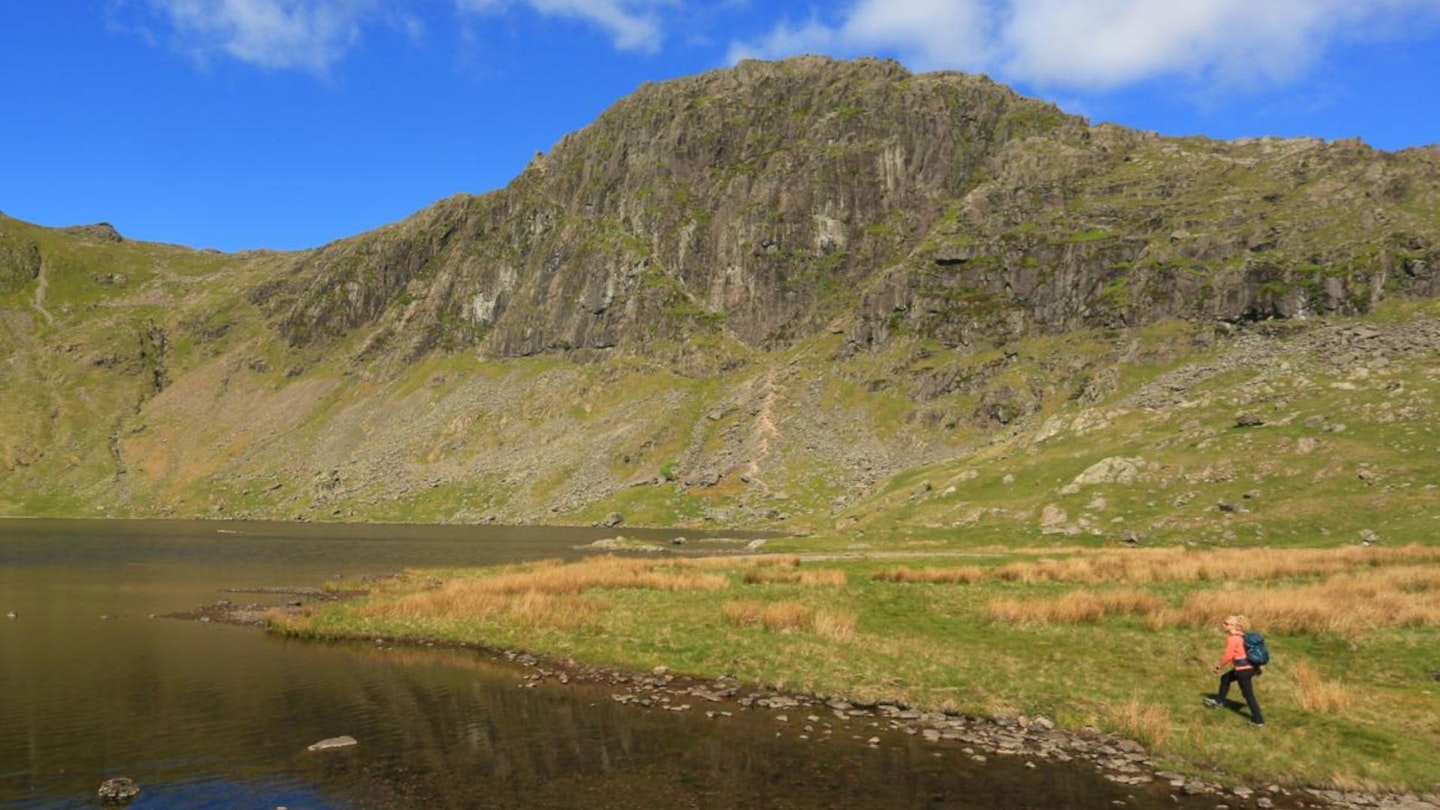
It’s a Grade 1 scramble – a route that requires a degree of rock climbing skill, employing both hands and feet, without being technical.
This is essentially an exposed walking route, but do not underestimate it. Jack’s Rake is an accident hotspot that has tragically claimed many lives. The rock is often crumbly and wet, and the scramble is very exposed in places.
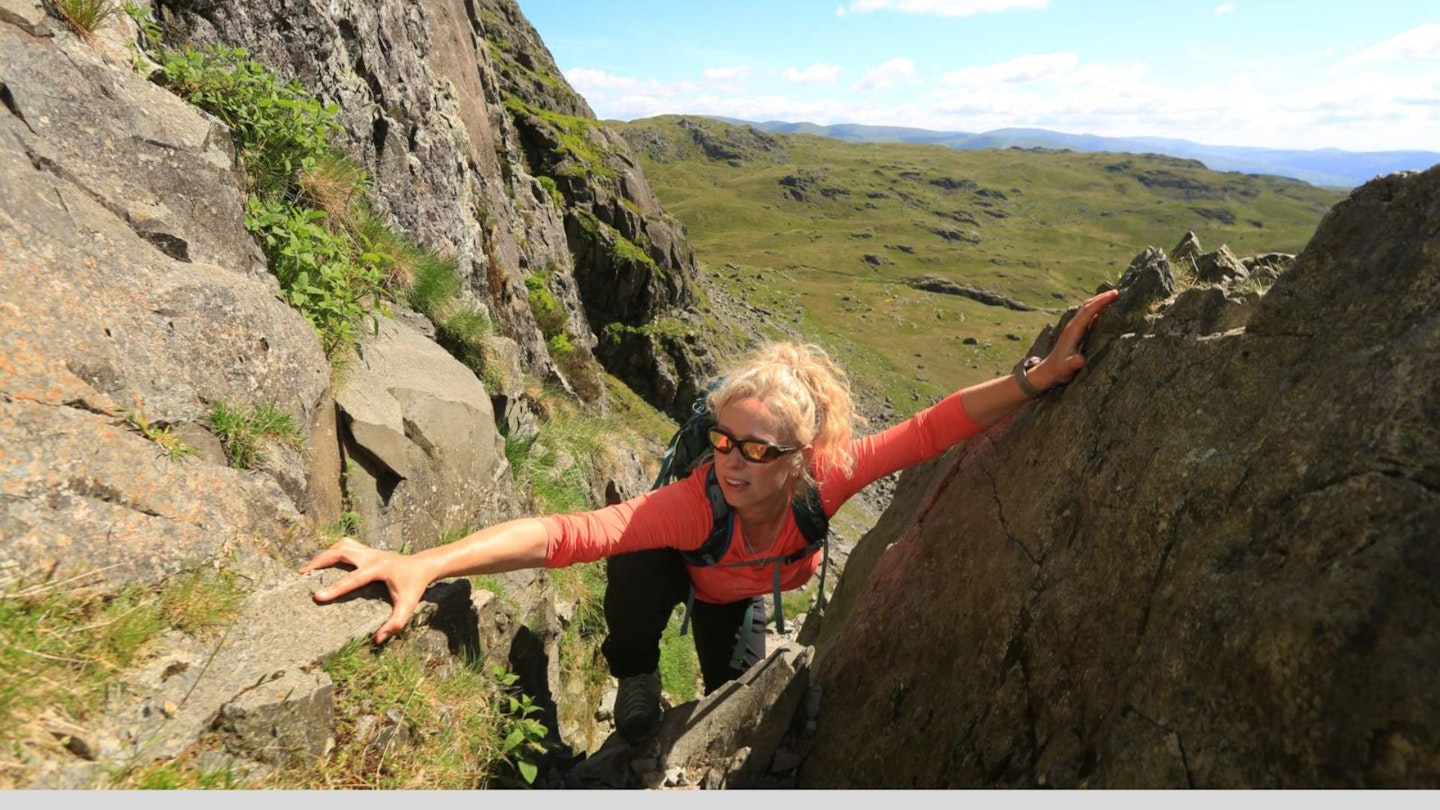
Take it on, however, and you will be rewarded with an adrenaline-inducing, memorable experience. You will scramble up a rocky groove, which mercifully shelters you from sheer precipices; haul yourself over rocky steps and up narrow chimneys; tiptoe along grassy terraces with dizzying views; and, ultimately, stand atop Pavey Ark feeling like a real adventurer.
It might just be the only way to improve a near-perfect day of hillwalking in the Lake District.
How difficult is Jack’s Rake?
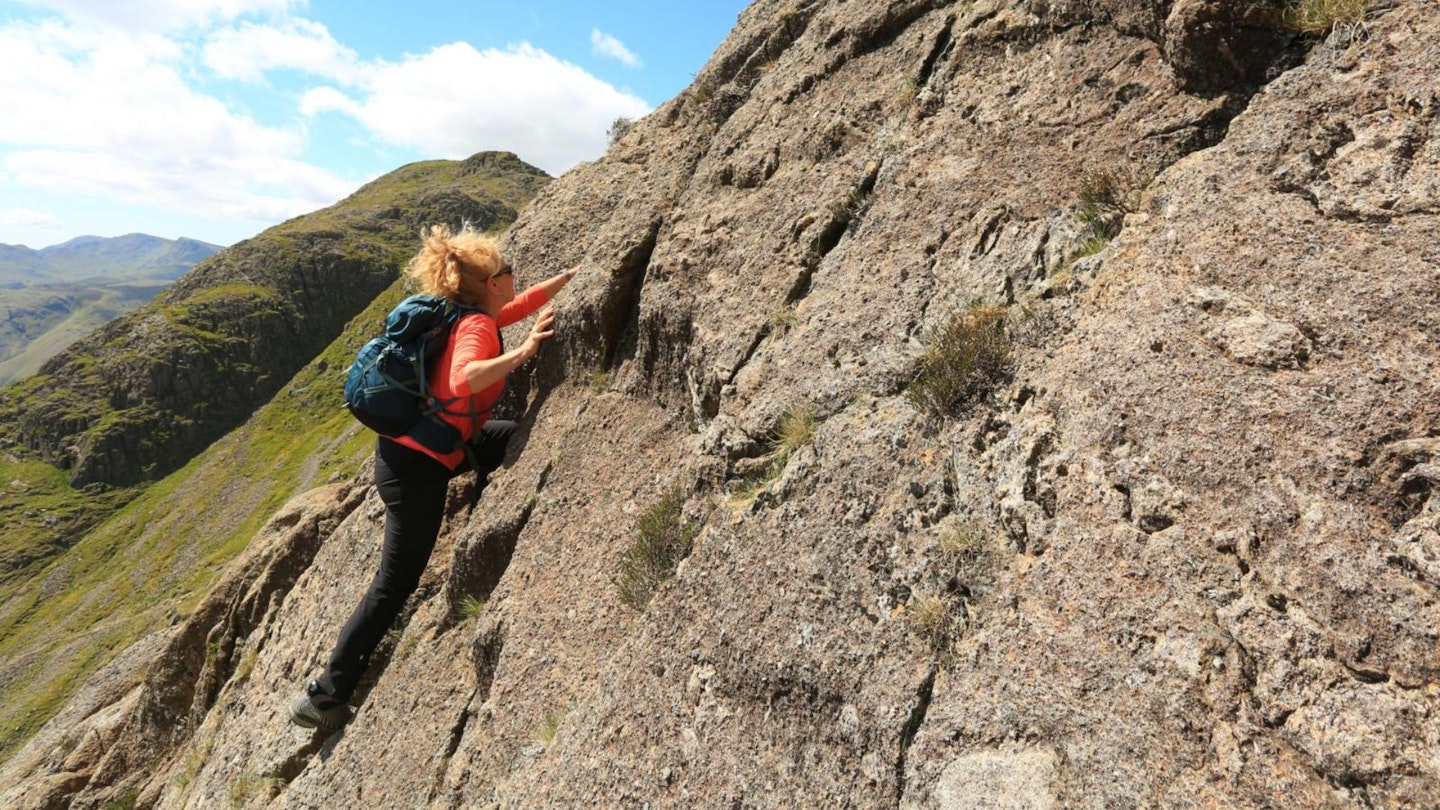
DIFFICULTY: Hard (Grade 1 scramble) | DISTANCE: 6km (3.5 miles)
TIME: 4-5 hours | TOTAL ASCENT: 872m
FITNESS: This isn't a long day out. The initial climb up alongside Stickle Ghyllwill give your legs a workout, but in terms of fitness this route won't be an issue to regular hikers.
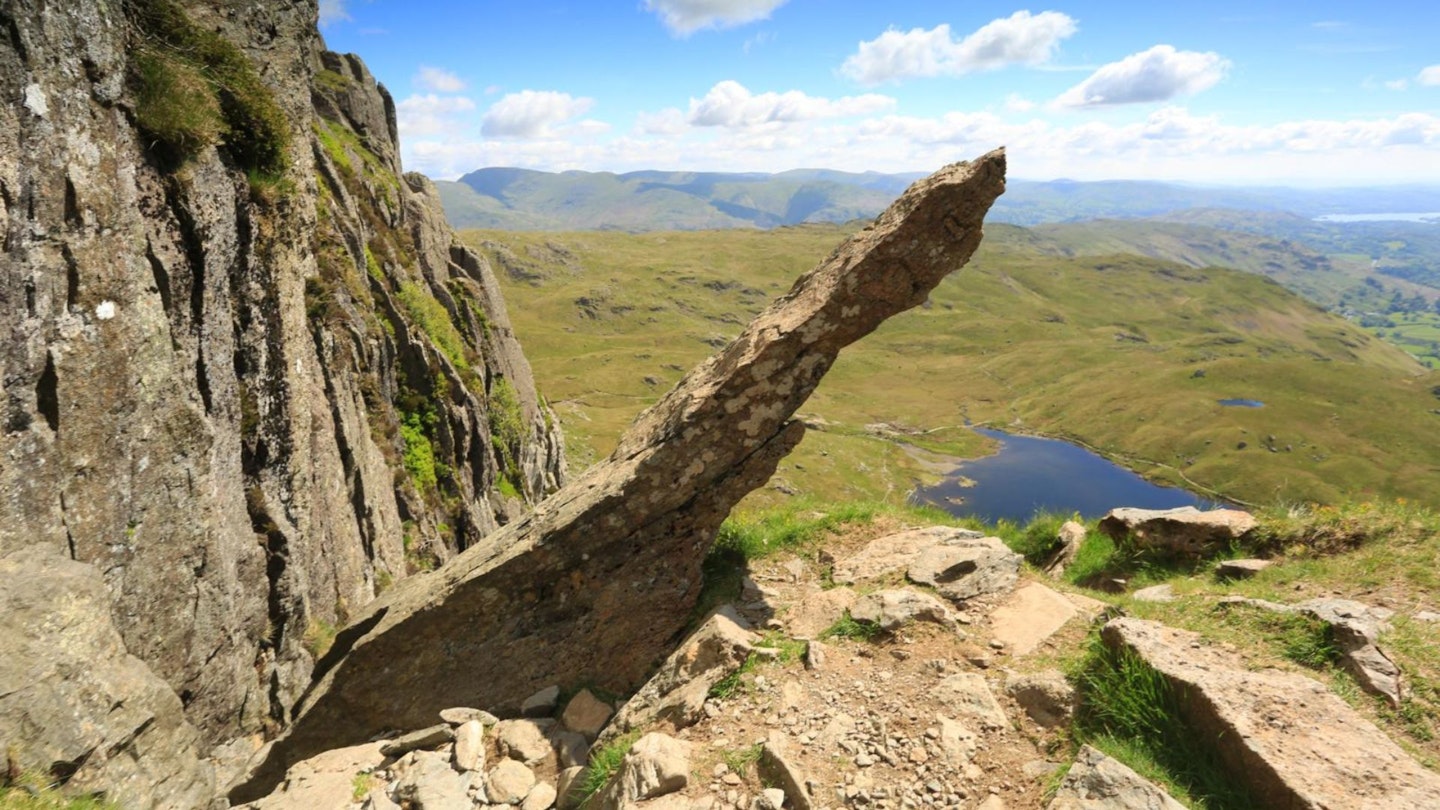
TERRAIN: Excellent fell paths to the start of the scramble, then rough and exposed scrambling on crumbly, wet rock on Jack’s Rake. Then good fell paths for the remainder of the walk
NAVIGATION: Locating the start of the scramble is fairly simple enough in good visibility. Once inside the Rake, navigation is straightforward as you follow the rocky trench upwards. Map and compass skills may be needed on the Langdale Pikes if the cloud is low.
Is Jack's Rake harder than Striding Edge?
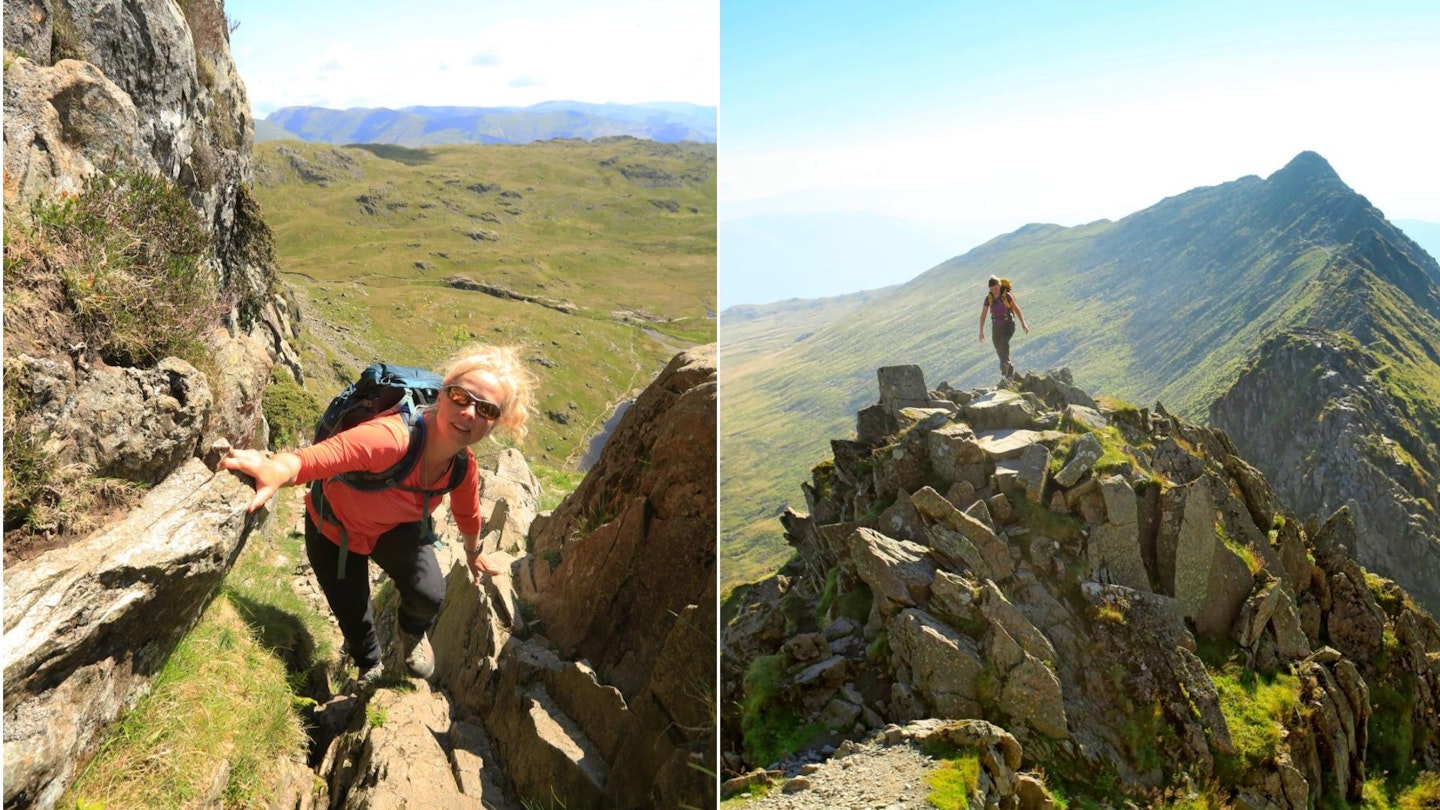
That's a tricky question to answer. Because although both are Grade 1 Lake District scrambles, the terrain varies greatly on both. Striding Edge is an exposed ridge with big drops on ether side, whereas Jack's Rake is a more enclosed scramble up a rocky trench.
The technicality and difficulty of the scrambling moves is probably similar on both, so it mostly comes down to how comfortable you are in the two different types of terrain. Both can feel very intimidating in their own way, and should be avoided completely in wet and/or windy conditions.
Where is the start of the walk?
The National Trust’s Stickle Ghyll car park, postcode LA22 9JU. Great Langdale is also home to some great pubs, including the Old Dungeon Ghyll and New Dungeon Ghyll, so you'll be spoilt for choice in terms of places to eat, drink and stay.
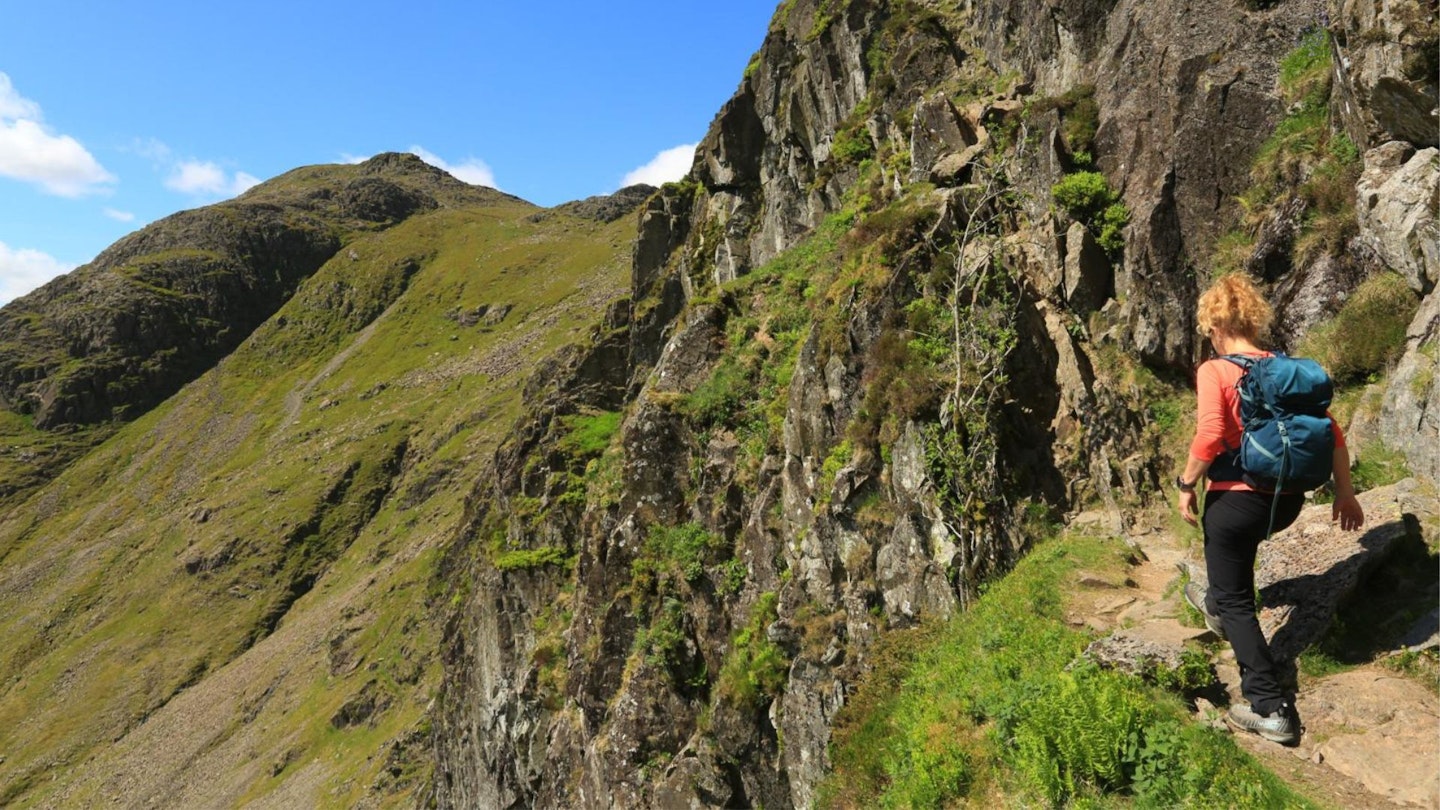
What's the best map for Jack’s Rake?
Best printed map:
Jack’s Rake | Step-by-step route guide
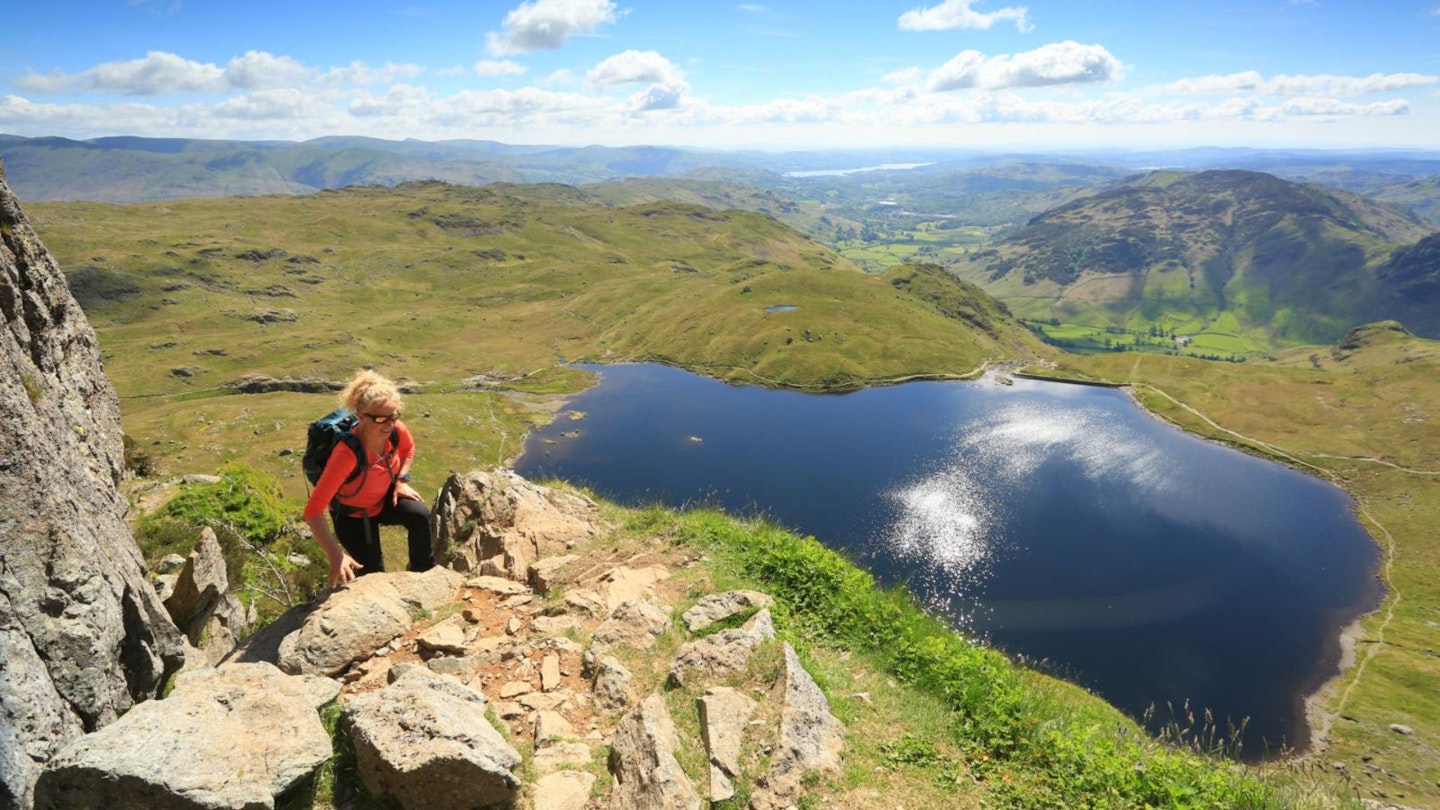
-
From the Stickle Ghyll car park, take the brief path past the toilets, following a mossy drystone wall, and turn right through a swinging gate. Turn left, aiming for the main path heading north-west alongside Stickle Ghyll. Ignore a turn-off to your left and continue straight ahead on the excellent, stone-pitched path with the stream on your right.
-
Cross the wooden footbridge and continue uphill on the other side of the stream. Cross a stile and continue north-west. The long ascent includes steep, rocky sections, passing a series of waterfalls. As the path veers right slightly around crags, negotiate a rocky step, cross the ghyll again at a line of large stepping-stone boulders and then emerge at the tarn.
-
Use the stepping stones to cross Stickle Ghyll and follow the clear path on the eastern shores to walk anti-clockwise around the tarn. Keep an eye on the obvious start of Jack’s Rake (see the second photo in this article), which cuts diagonally through the imposing cliffs of Pavey Ark across the tarn, as it can become tricky to find the closer you get.
-
Hop on boulders over a boggy section to the eastern tip of the tarn, cross a stream and pick up a faint trod that curves north-west and west around the tarn. At the northernmost tip of the tarn, veer right over boulders and scree to the start of Jack’s Rake.
-
Scramble up the rocky trough, which is often wet and slippery but has good handholds, and aim for the prominent rowan tree on the skyline. The initial climb to the tree is steep and tricky in places, but the rocky groove shelters scramblers from the worst of the exposure.
-
Continue over a gentler platform, taking care to avoid the precipitous gullies and cliffs to the left. Negotiate an awkward steep, rocky chimney, before taking an easier terrace and climbing a steep rocky groove again. Turn right up Great Gully briefly and then veer left.
-
Choose your line of ascent over grassy ledges and rocky steps, aiming for a depression to the right of a cone-shaped pinnacle, and emerge safely to the ridge. Turn right and climb easily to the summit of Pavey Ark.
-
Re-trace your steps over the rocky terrain to the point where you emerged from Jack’s Rake onto the ridge. Pick up the path heading west and pass two small tarns on your right. Continue on the good path, which veers sharply south following a line of small cairns. Descend momentarily before looping back west and north to the 736m summit of Harrison Stickle, the highest point of the Langdale Pikes.
-
Descend west towards the dramatic dome of Pike of Stickle. It is a steep, rocky descent but there are no technical difficulties. Veer left at a large cairn towards Dungeon Ghyll and pick up the path heading south-east for Thorn Crag. Negotiate a few rocky steps to reach a large cairn and then on the stone-pitched path.
-
Descend over grassy slopes to the prominent top of Pike Howe, which is too tempting to miss, and then retrace your steps briefly before descending steeply south and east to reach a drystone wall. Follow the wall south and cross a high stile next to the ghyll. Pass a wooden bench and turn left onto the Cumbria Way at a wall junction.
-
Go through a kissing gate and descend east back towards Stickle Ghyll. Rejoin the main path, turn right, go through the gate and arrive back at the car park.
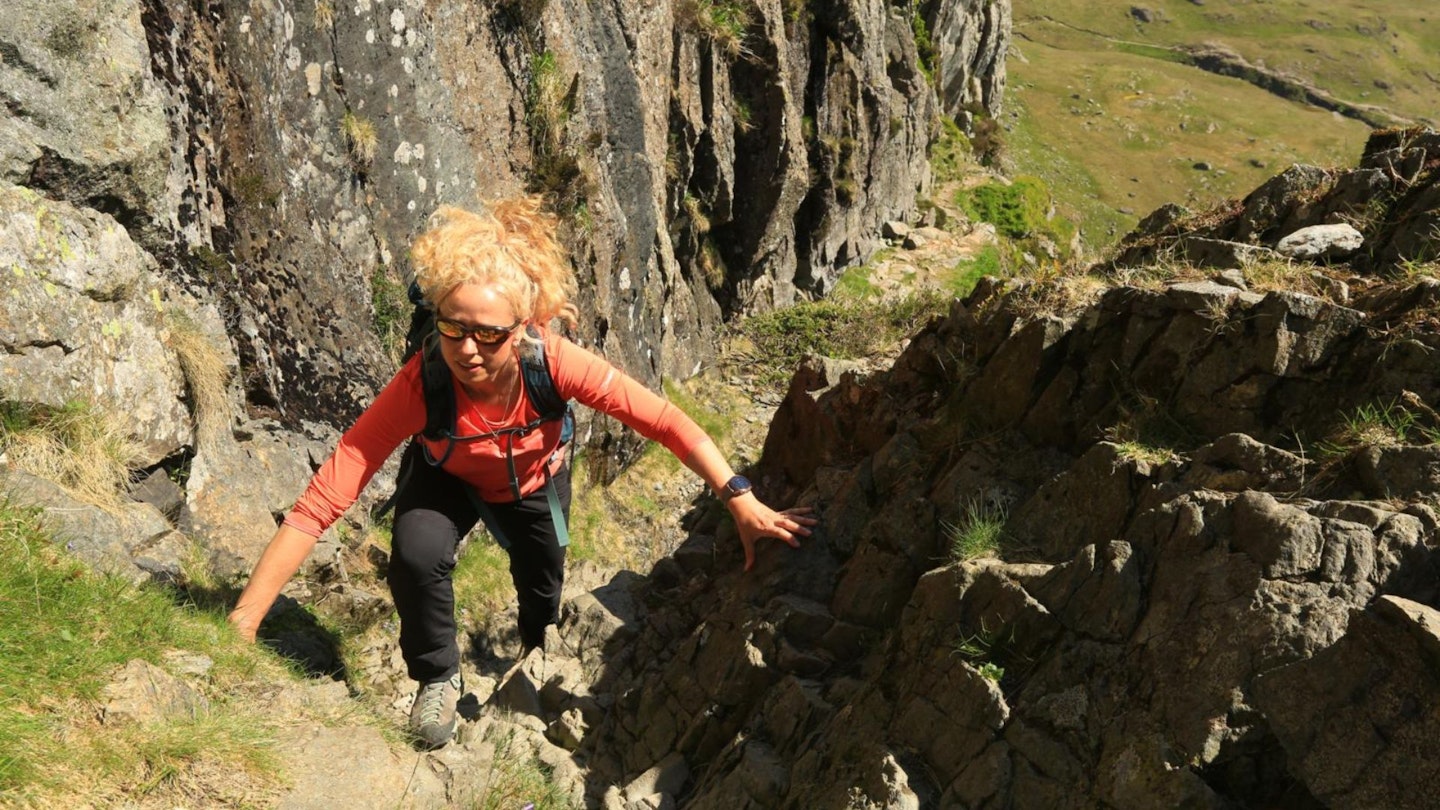
What walking gear do I need for this route?
This is a rough, rocky route on serious mountain terrain, so it shouldn't be taken lightly in terms of kit or planning.
We'd recommend the obvious basics of walking boots or hiking shoes, a good hiking daypack, a reliable waterproof jacket, and a pair of quick-drying walking trousers with some packable waterproof overtrousers in your bag.
You should also carry insulating layers because it can get cold, especially when you finish the scramble and walk along the tops of the Langdale Pikes.
About the author
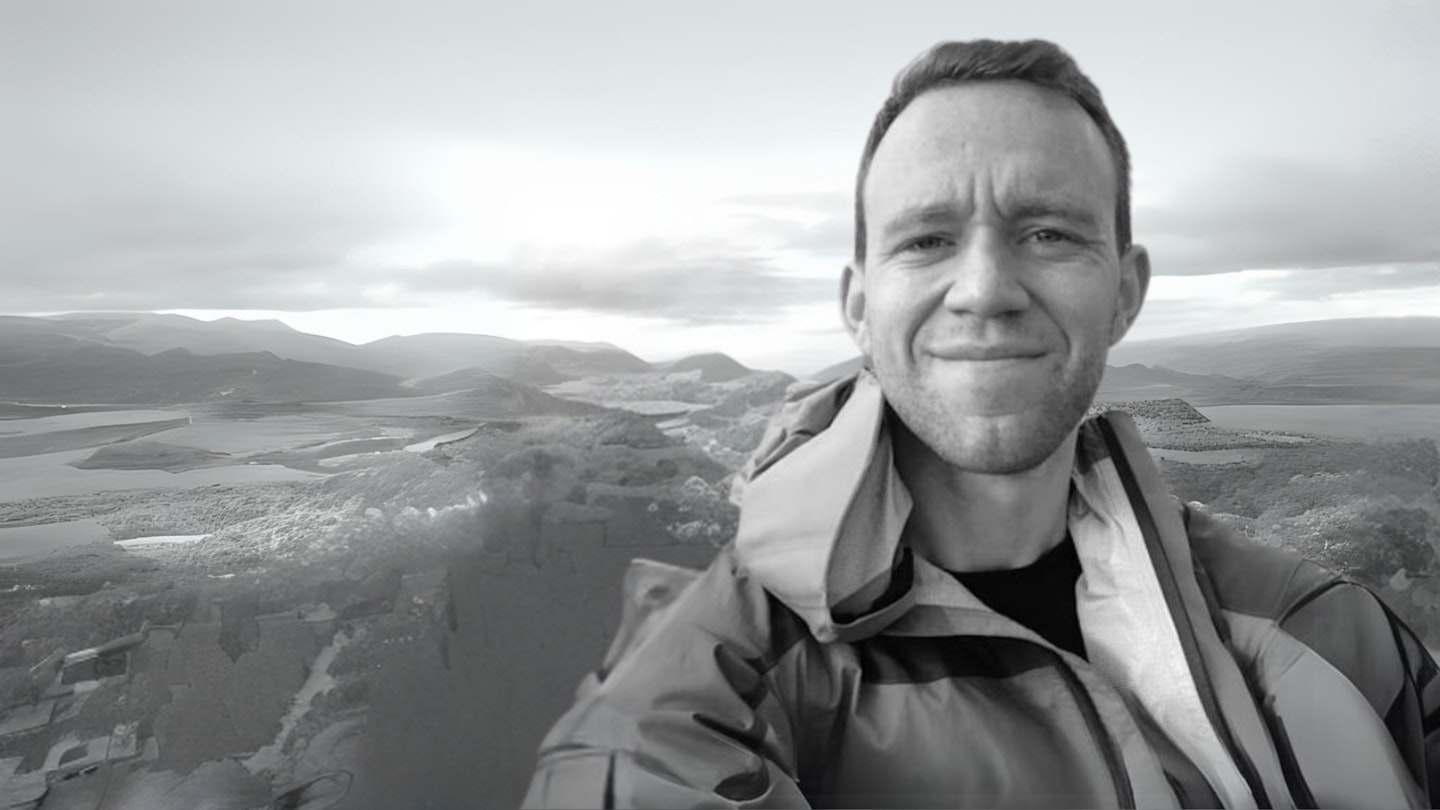
James Forrest writes regular features and route guides for Trail magazine and has been one of our main gear testers for the last few years. James is based on the edge of the Lake District so when he isn’t off on his latest crazy adventure or challenge, he’s walking in his local fells.
